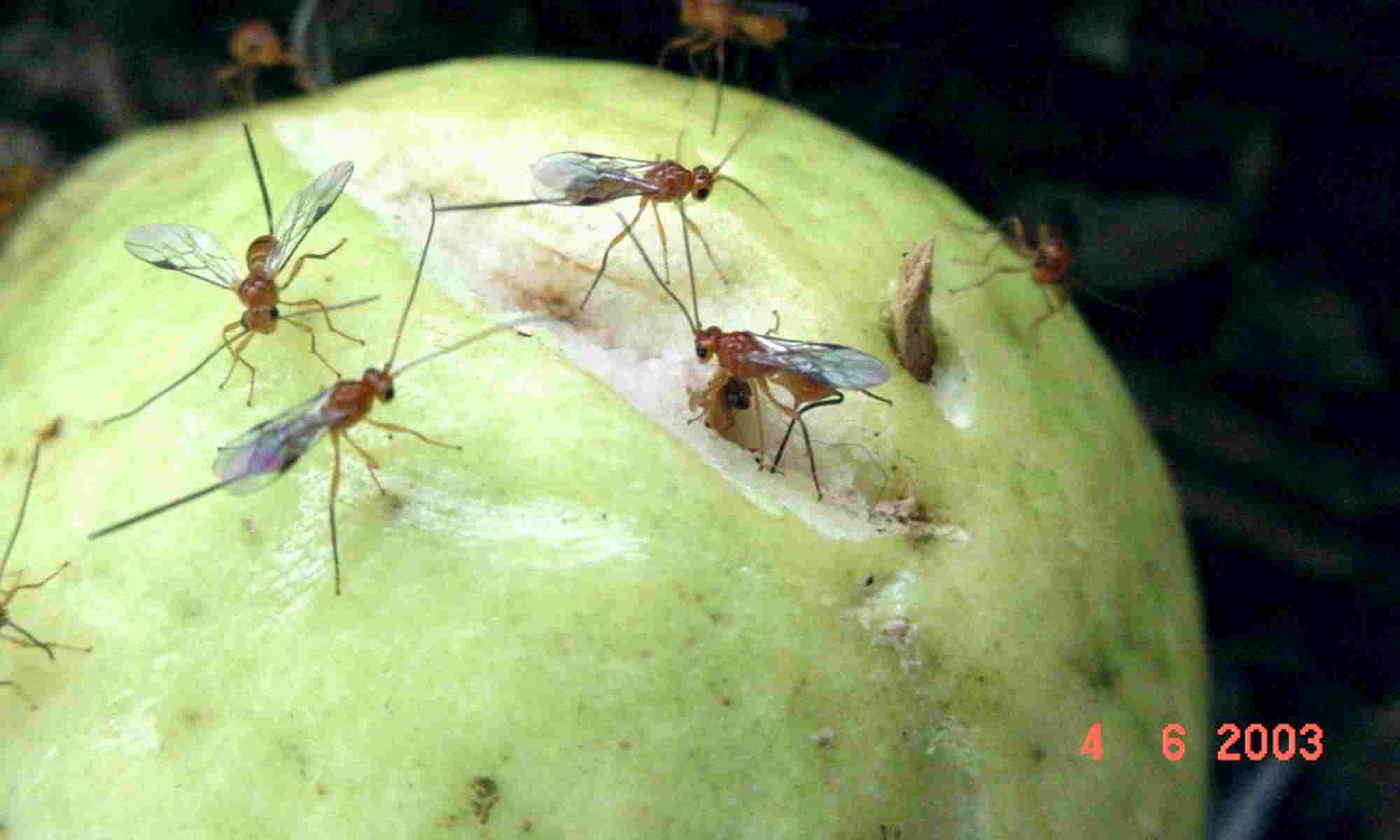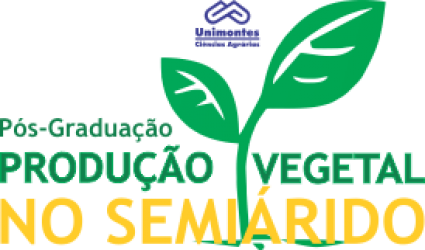- Version
- Download 0
- File Size 1.67 MB
- Create Date 11/06/2021
- Download
PINTO, Valéria de Oliveira. Produção de frutos de alta qualidade e sem sementes com o uso do GA3 em atemoieira ‘Gefner’. 2016. 81 p. Dissertação (Mestrado em Produção Vegetal no Semiárido) – Universidade Estadual de Montes Claros, Janaúba, 2016.
A cultura da atemoia vem ganhando espaço no mercado devido à excelente qualidade organoléptica e ao valor agregado da fruta. No manejo da produção dessa fruteira, a utilização de reguladores de crescimento, em especial as giberelinas, tem possibilitado a produção de frutos com e sem sementes de excelente padrão comercial. O objetivo do presente trabalho foi avaliar o efeito do ácido giberélico (GA3), em diferentes doses e épocas de aplicação, na frutificação efetiva e na qualidade de frutos de atemoieira ‘Gefner’. Foram instalados dois experimentos em delineamento experimental em blocos ao acaso, com quatro repetições, sendo os tratamentos submetidos a diferentes doses de GA3, associado ou não com a polinização artificial. No primeiro experimento, foram aplicadas as seguintes doses de GA3: 250, 500 e 1.000 mg L-1,associadas ou não com a polinização artificial. No segundo experimento, aplicaram-se as seguintes doses de GA3:100, 150, 200, 250,500 e 1.000 mg L-1,associadas ou não com polinização artificial. Foram avaliados, a cada sete dias, o pegamento, o comprimento, o diâmetro e, após a colheita, as características físico-químicas dos frutos. No primeiro experimento, o comprimento e o diâmetro dos frutos de atemoieira ‘Gefner’, independentemente dos tratamentos aplicados, seguem um padrão de crescimento sigmoidal, com primeira fase lenta até a 3a semana após a antese (SAA). A segunda fase foi caracterizada pelo crescimento mais acelerado até a 8a SAA, seguida da fase final, de crescimento mais lento, até a colheita, na 17a SAA. A polinização artificial, combinada com duas aplicações de 250 mg L-1 de GA3, proporcionou frutos de atemoieira ‘Gefner’ graúdos, com elevada porcentagem de polpa e excelentes características físico-químicas. A Aplicação de 1.000 mg L-1 de GA3, parcelada em quatro doses, sem polinização artificial, proporcionou elevada porcentagem de frutificação efetiva, frutos sem sementes e com excelente qualidade físico-química. No segundo experimento, a taxa de crescimento do comprimento e do diâmetro dos frutos apresentou, em todos os tratamentos, um padrão sigmoide, com os maiores picos de crescimento na 4ª e na 5ª SAA. A polinização artificial associada a duas aplicações de 250 mg L-1 de GA3,na 2ª e na 4ª SAA, apresentou elevado pegamento, frutificação efetiva, comprimento, diâmetro e massa dos frutos, além de redução da massa fresca total das sementes. A aplicação de 1.000 mg L-1 de GA3parcelada em quatro vezes, a partir da antese, originou frutos sem sementes, com qualidades físicas e físico-químicas equivalentes às dos frutos de polinização artificial. A aplicação isolada de GA3 proporcionou frutos com porcentagem de polpa superior à dos frutos polinizados artificialmente.
Palavras-chave: Ácido giberélico, Annona squamosa x Annona cherimola, frutificação, polinização, regulador vegetal.
Production of high-quality and seedless fruits with GA3 in ‘Gefner’ atemoya
Atemoya culture has been gaining space in the market due to the excellent organoleptic quality and added value of the fruit. In the management of production of this fruit tree, the use of growth regulators, in particular the gibberellins, has allowed to produce excellent commercial standard fruits with and without seeds. This study aimed to evaluate the effect of gibberellic acid (GA3),applied in different dose levels and times, on fruit set and quality for ‘Gefner’ atemoya. Two experiments were carried out in a randomized complete block design with four replicates, and the treatments were submitted to different dose levels of GA3 associated or not with artificial pollination. The first experiment was treated with the following GA3doses: 250, 500 and 1,000 mg L-1 associated or not with artificial pollination. The second experiment was treated with the following GA3 doses: 100, 150, 200, 250, 500 and 1,000 mg L-1 associated or not with artificial pollination. Fruit set, length and diameter were evaluated every seven days, and the physical-chemical characteristics were evaluated after harvest. In the first experiment, ‘Gefner’ atemoya fruit length and diameter, regardless of the treatments applied, followed a sigmoidal growth pattern, with a slow first stage until the3rd week after anthesis (WAA). The second stage presented more accelerated growth up to the 8th WAA, followed by slower growth at the final stage until harvest in the 17thWAA. Artificial pollination combined with two GA3 doses of 250 mg L-1 yielded grown ‘Gefner’ atemoya fruits, with a high pulp percentage and excellent physical-chemical characteristics. Application of GA3 dose of 1,000 mg L-1, divided into four doses, without artificial pollination, provided high percentage of seedless fruit set with excellent physical-chemical quality. In the second experiment, the growth rate of fruit length and diameter presented a sigmoidal pattern in all treatments, with the highest peak in the 4th and 5th WAA. Artificial pollination, associated to two GA3 doses of 250 mg L-1, in the 2nd and 4th WAA, presented high fruit set and high proportions of fruit length, diameter and mass as well as a reduced total seed fresh mass. The application of GA3 dose of 1,000 mg L-1, divided into four doses as of anthesis, yielded seedless fruits with physical and physical-chemical properties equivalent to those of fruits that received artificial pollination. Isolated application of GA3 yielded fruits with pulp percentage higher than that of artificially pollinated fruits.
Keywords: Gibberellic acid, Annona squamosa x Annona cherimola, fruit set, pollination, growth regulator.

